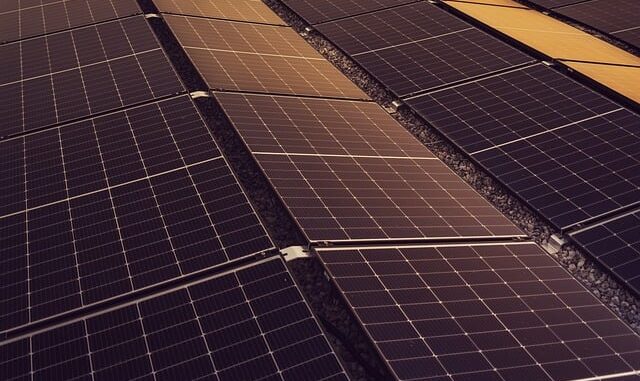
Summary
Boost your building’s efficiency and sustainability with LEED. This article provides actionable steps to achieve LEED certification, improve energy performance, and reduce environmental impact. Whether you’re a building owner or manager, this guide helps you navigate the LEED process.
Successful low-energy building design hinges on careful planning. Focus360 Energy can help.
** Main Story**
Want to save money and help the planet? Boosting energy efficiency in your existing buildings is a fantastic way to do it, offering significant financial and environmental wins. Let’s walk through how you can enhance your building’s energy performance, slash those operational costs, and contribute to a healthier environment. It all starts with understanding the LEED (Leadership in Energy and Environmental Design) rating system.
Understanding LEED
LEED is basically a globally recognized stamp of approval for green buildings. It provides a framework for owners and operators to design, build, operate, and maintain buildings that are environmentally friendly and perform well. When a building gets LEED certified, it’s a sign that they’re serious about sustainability and using resources efficiently. There are different LEED rating systems, but for existing buildings, the LEED for Existing Buildings: Operations & Maintenance (LEED O+M) rating system is what you’re after. This focuses on making your building perform better over time and cutting down on its environmental impact. Makes sense, right?
Benefits of LEED Certification
So, what’s in it for you? Well, LEED certification has tons of perks for building owners and occupants.
- For starters, it can seriously cut down on your energy and water bills, which means lower operating costs, and who doesn’t want that?
- Better indoor air quality and comfortable temperatures make for happier and more productive workers. And happy workers, happy life.
- Plus, LEED-certified buildings tend to attract tenants who care about the environment.
- And get this, it can even boost your property’s market value!
- Finally, it’s a great way to show the world you’re committed to sustainability, which improves your company’s image. Let’s be honest, that’s a big deal these days.
Steps to Achieve LEED Certification
Okay, so how do you actually get LEED certified? Here’s a breakdown of the key steps:
Conduct a Preliminary Assessment
First things first, you need to see how your building is performing right now. Gather data on how much energy and water you’re using, how much waste you’re generating, the quality of the air inside, and other important stuff. I mean, you’ve got to know where you stand to know where to improve! This assessment will highlight areas where you can make changes and help you figure out if your building even qualifies for LEED certification in the first place. By the way, tools like the ENERGY STAR Portfolio Manager can help you compare your building’s performance to similar buildings. Pretty neat, eh?
Assemble a Project Team
You can’t do this alone, so build a team of people who know their stuff about different aspects of building operations. This team will be in charge of the LEED certification process and making sure you actually implement sustainable practices. You’ll want facility managers, building engineers, sustainability consultants, and even some representatives from the people who actually use the building.
Select a LEED Rating System
As I mentioned earlier, for existing buildings, you’ll want to go with LEED O+M. This system tackles things like energy efficiency, water conservation, indoor air quality, what materials you’re using, and how you’re managing the site sustainably.
Develop a Sustainability Plan
Next, you’ve got to create a detailed plan based on the LEED rating system you chose. This plan should have specific strategies and goals for things like cutting down on energy use, using water more efficiently, reducing waste, making the air inside better, and just making the building run better overall. You should prioritize the things that will have the biggest impact and are the most cost-effective, of course.
Implement the Plan
Time to put your plan into action! Think about upgrading to energy-efficient lighting, HVAC systems, and appliances. Implement water-saving measures, start a solid recycling program, and improve the air inside with better ventilation and filtration. And don’t forget to keep track of how things are going and collect data on your progress. If something isn’t working, you might need to tweak it.
Document and Submit for Review
You’ve got to prove you’re doing what you say you’re doing, so gather all the paperwork you need to show you’re meeting the LEED requirements. That includes things like energy bills, water usage data, waste management reports, air quality measurements, and anything else that’s relevant. Then, you’ll submit all that to the U.S. Green Building Council (USGBC) or whatever green building council is in your country for them to review.
Obtain LEED Certification
If the USGBC gives you the thumbs up, your building will get LEED certification at a certain level (Certified, Silver, Gold, or Platinum), depending on how many points you earned. Just a heads up, LEED certification is only good for a certain amount of time, so you’ll need to keep up the good work and keep monitoring your performance to get recertified. It is a constant process.
Conclusion: Embrace Sustainable Building Operations
Think of going LEED as investing in the future of your building. By following these steps and committing to sustainable practices, not only can you get that LEED certification, but you can also seriously improve how your building performs, slash your operating costs, and help create a more environmentally responsible world. It’s a win-win. With the world heading towards greater sustainability, LEED certification makes your building a leader in the green building movement. And the benefits go way beyond just the building; they have a positive impact on the community and the planet. So, embrace sustainable building operations, and enjoy the long-term rewards of a building that’s greener, healthier, and more efficient!


Be the first to comment